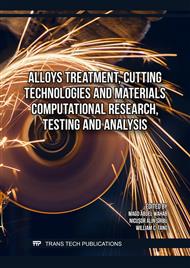p.3
p.11
p.19
p.35
p.49
p.59
p.73
p.81
Effects of Heat Treatments on Fatigue Damage of Aluminum Alloy 2017A
Abstract:
This study investigates how heat treatment affects the mechanical properties and microstructure of extruded AA2017 aluminum alloy. Quenching (icy water vs. liquid nitrogen) and tempering (T6: 120–160°C; T7: 240°C) significantly alter hardness, tensile strength, and fatigue life. T6 promotes fine, coherent precipitates, enhancing strength and fatigue resistance, while T7 leads to over-aging and property degradation [X]. Icy water quenching improves fatigue life over liquid nitrogen by refining precipitates [Y]. Microstructural analysis reveals elastic adaptation (T6) and plastic shakedown (T7) as fatigue stabilization mechanisms, with fracture modes shifting from ductile (T6) to mixed ductile-brittle (T7) [Z]. These results optimize heat treatment for AA2017 in high-strength, fatigue-critical applications.
Info:
Periodical:
Pages:
11-15
Citation:
Online since:
November 2025
Authors:
Keywords:
Price:
Сopyright:
© 2025 Trans Tech Publications Ltd. All Rights Reserved
Share:
Citation:


